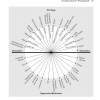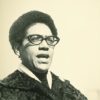Crash Course in Intersectionality

This lesson serves to introduce students the concept of intersectionality to help them gain a new framework for better examining themselves and how they fit into the world around them.

Instructional Resources for California Educators, Students, & Families

This lesson serves to introduce students the concept of intersectionality to help them gain a new framework for better examining themselves and how they fit into the world around them.

In this lesson, students will examine primary sources to understand how Bayard Rustin’s identity shaped and influenced his actions as a Civil Rights leaders. They will participate in whole group discussions and small group work to deepen their knowledge on who Bayard Rustin is and how his identity as a gay man affected his life as an advocate. They will demonstrate their learning by writing an argumentative essay answering the inquiry question.

In this lesson, students will familiarize themselves with the concept of intersectionality — how intersecting identities and oppressions shape perspectives and experiences. Through the close reading and discussion of the article “Age, Race, Class, and Sex: Women Redefining Difference” featured in the influential book Sister Outsider: Essays and Speeches by Audre Lorde, students will think critically about how multiple identities and systems of oppressions impact the relationships people have with each other as well as with institutions. Audre Lorde, Black lesbian poet and feminist writer, signed a contract with The Crossing Press on November 19, 1982 to publish her monumental book Sister Outsider: Essays and Speeches. Sister Outsideris celebrated as a historic piece of literature exploring the intersections of race, sexuality, gender, poverty, and politics.

The FAIR Education Act (Fair, Accurate, Inclusive, and Respectful Education Act) was passed in 2011 in California State Legislature. It advocates for the inclusive representation of LGBTQ and disability communities in California History and Social Science Curriculums. In this lesson, students will participate in pre-reading activities, close-read the SB 48 text and build community amongst peers in the classroom. By the end of the lesson, students will have examined the opinions of those in opposition of the bill and those in support of the bill, including the LGBTQ youth voices who advocated for themselves in the senate hearings (using the framework of Critical Media Literacy by Jeff Share). By highlighting youth agency, this lesson aims to both celebrate the people involved in passing this groundbreaking bill and to provide students with the language necessary to communicate what their rights are.